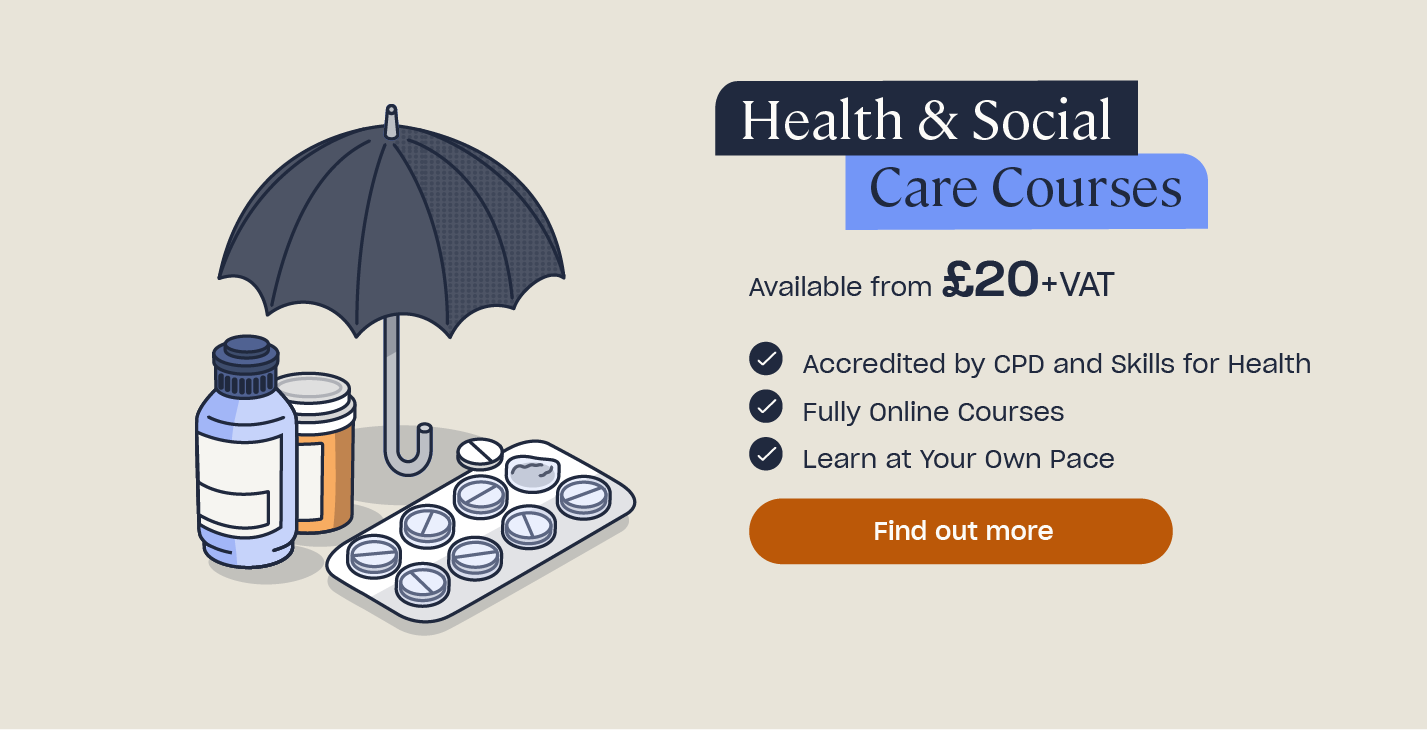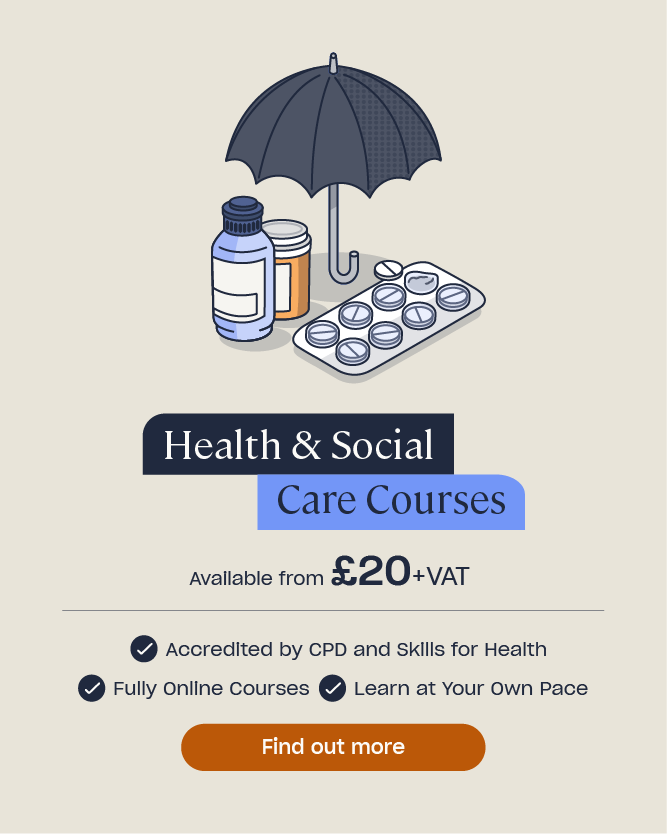Using Technology in Health and Social Care
Those working within the health and social care sector will likely have seen an increase in the use of technology over the years. Looking to the future is essential in health and social care as the government set out long term goals to protect and improve the services provided. The use of technology to streamline processes, reduce workload, improve quality of care and deliver better outcomes to the public, are all factors that highlight its importance.
This article will look at what technology in health and social care is, the different types available, how technologies are used and discuss some of the risks and benefits involved. Understanding the role technology plays in health and social care is relevant to anyone working within the industry, those who care for or have friends or family utilising services, or anyone with care needs themselves.
What is Technology in Health and Social Care?
Technology in health and social care can come in various forms and have many different purposes. We are going to consider technology to be any IT tool or software designed to improve health and social care processes, administrative productivity or to provide new insights into patient care, medicines and treatments.
Whilst we may initially think of innovative inventions such as robotics and virtual reality when we think of technology, more commonplace digital technologies such as emails, websites, electronic recording systems and text message services have been used within the sector for some time and continue to change and develop.
The health and social care sector is well known for facing many pressures, with demand often outweighing the time and staffing resources available.
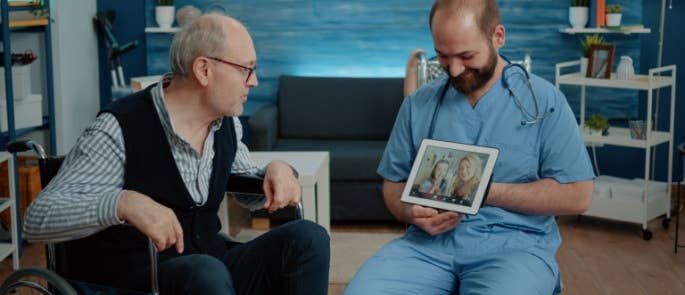
During the COVID-19 pandemic the pressures were magnified and the use of technology was essential – from telephone and video consultations being required to the use of various apps to help manage the spread of the virus. Technology in those circumstances proved a positive addition to the sector, notably as a means of helping service users maintain contact with their loved ones when they were unable to see one another face to face, greatly increasing their active participation and wellbeing.
Technology is present in many daily operations within health and social care settings. Where there were once reams of paperwork, many organisations are now using electronic processes instead, such as online applications for timesheets, producing staff rotas, or ordering prescriptions. Many community nurses carry with them an electronic tablet to access and update their patients’ records and many hospitals and GP surgeries allow patients to check themselves in for appointments electronically, therefore no longer having to queue for a receptionist.
Technology in health and social care is integral to so many of its services from an information sharing, storing and processing perspective but also in the delivery of treatments and care individuals receive. From diabetic technology that allows a glucose reading to be taken by a wearable device and tracked via an app, to robot-assisted surgery and the use of 3D printing to produce protheses.
The use of technology as a means of monitoring and encouraging better health and fitness levels throughout society has seen a large increase in recent years. As so many people have access to mobile apps, online and interactive fitness equipment and wearable and syncable health and fitness trackers, the acceptance and uptake of health-related technologies is increasing.
What are the Different Types of Technology in Healthcare?
As mentioned, the types of technology in health and social care are numerous. They include artificial intelligence, wearable technologies, mobile applications and websites and various clinical data storing and sharing systems.
Virtual reality (VR) and augmented reality (AR) are an interesting type of technology to use within the sector, most notably as a way of delivering staff training, as it gets as close to a real life scenario as possible. This technology can also be used as a way of relieving pain and anxiety in patients, or as an aid to psychological treatments like exposure therapy.

Websites Used in Health and Social Care
Websites are a great way to share up to date information. Within the health and social care sector there are many official bodies who are responsible for providing accessible and up to date guidance, legislation and regulations on health and social care practices. They can offer advice and resources for the general public or detail important knowledge needed for professionals working in the industry. Examples of organisations whose websites provide key information include:
- National Health Service (NHS).
- Health and Safety Executive (HSE).
- Care Quality Commission (CQC).
- Skills for Care (SfC).
- Skills for Health (SfH).
- Department of Health and Social Care.
- World Health Organisation (WHO).
There are also websites available that allow patients to access some of their medical records. For example Patient View, a website initially intended for use by renal patients to access their own test results and correspondence, which has since become widely accessible. Websites such as those for GP practices are also available and allow patients to log on and access certain services, for example booking appointments or ordering medications.
Apps for Healthcare
Apps accessible to the public are continuously evolving, varied and numerous. They range from mental health support and health trackers, to image analysis such as mole-checking apps. Whilst some apps lack credibility, there are many out there that can be used and synched to reputable medical devices and help a person monitor and manage their medical conditions more effectively. There are also those that allow an individual to access their own medical records amongst other services. We refer here to the NHS app, which allows access to information, such as your health record, prescription ordering, appointment booking, health advice and organ donation decisions.
The NHS app, along with those syncable to medical devices and those used as a means to help a patient manage their medical condition, have certainly been the most notably widespread examples of technology in the sector. However, there is potential for advancements for this technology in the future as there are many new services available, such as new image analysis apps like those used for measuring the surface of a wound.
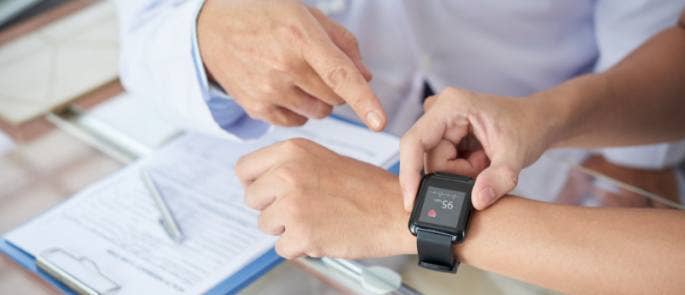
Wearables in Healthcare
Whilst wearable technology has been around for a while, with continual advancements they have become much more prevalent with changes in design, functionality and a reduction in size. This is particularly true in items such as smartwatches and fitness trackers. As with apps, there is new technology on the market that is not widely used in practice within health and social care settings, such as infant patches designed to link to a mobile device via Bluetooth. This is intended to notify parents of their child’s temperature without them having to manually take it.
Wearables that act as sensors can be a simple, yet effective, item to be used in a variety of circumstances. Pendants that automatically call for assistance if triggered by a fall are quite commonly worn by people in their own homes who pose a fall risk .
With dehydration in the elderly being such an area of concern in health and social care, technologies such as drinking cups with sensors to monitor how much a person has had to drink have increased in recent times. With this in mind, there is more technology being developed to measure hydration levels via a wearable device. However, at present, this mainly seems to be aimed at athletes for use during physical activity.
How is Technology Used in Healthcare?
As time goes on and steps are put in place to try to relieve the burden on the sector’s staff, resources and services, improving efficiency will become a main focus. Technology will play its part in this, with talk of providing patients with the option to choose remote care when accessing certain primary care services, such as GPs. This option would be supported by the use of technology to enable specialist advice to be provided at a distance.
Efficiency can also go hand in hand with an increase in the quality of care provided as technological advancements mean an increase in the use of data analytics. This essentially means introducing new software or devices that can take in more information regarding a patient, such as their medical conditions, medications, remote monitoring of their condition and symptoms. They can then analyse this information to better deliver a diagnosis, prognosis, allow for earlier interventions and provide more tailored treatment plans.
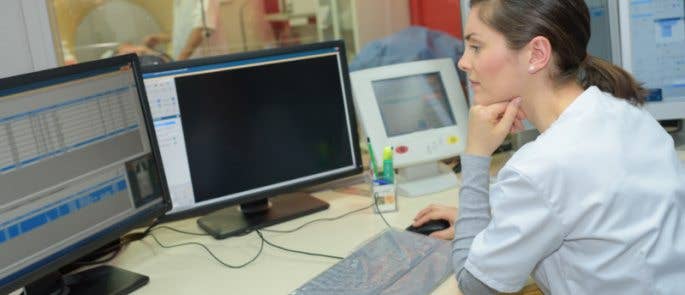
The volume of data that can be collected in healthcare is truly massive and therefore the technology required to analyse such amounts needs to be sufficiently advanced. The term ‘big data’ has been coined to describe this area of data analytics and when data on such a scale is managed, analysed and interpreted correctly, it has the potential to lead to better services, better treatment and better outcomes for patients. It also has the potential to bring financial advantages. For example, better services and better treatment for diabetic patients could lead to a reduction in amputations, leading to large annual cost savings.
Technology can be used to collect information from an individual, such as their heart rate, stress levels, sleep information and oxygen levels. This may be done via mobile apps and wearable devices like smartwatches, therefore it does not require a care worker to manually take such readings. It is important to remember that as technologies develop and reduce the need for as many face to face interactions between care staff and service users, the fundamental care standards as set out in the Care Certificate must always be maintained to provide high-quality, person-centered care at all times.
Integrated care systems are a key aim for the long term plan of the NHS. This is intended to remove current barriers facing clinicians who wish to access patients’ records and care plans from wherever they are, and allow for a smoother, more multidisciplinary approach to patient care via newly formed primary care networks. Having a robust and mature operating system will be imperative for this to work effectively.

Benefits of Technology in Healthcare
There are many benefits of using technology in healthcare, including:
- Giving the service users more control over their own health, safety and wellbeing.
- Helping communication with families, professionals and staff.
- Capturing and comparing data, as well as sharing good practice with peers.
- Less invasive surgery, less blood loss, smaller incisions, less scarring and a faster recovery with robotic assistance during surgery.
- Offering the potential to have more immediate access to a consultation remotely.
- Providing easier to read records as there is no need to decipher handwriting.
- Making patient information more easily accessible between locations, teams and clinicians.
- Meaning digital information is less likely to be lost, damaged, or destroyed as paper records can be.
- Enhancing the care and treatment providers can offer.
Risks of Technology in Healthcare
However, there are some risks associated with using technology in healthcare, including:
- An overreliance on technology which may reduce staff’s practical clinical skills.
- An increase in the risk of cyber attacks and data theft.
- Possible inequality in technology distribution within different services and areas.
- A reduction in the amount of one to one time service users receive from staff.
- Input errors from entering incorrect information.
- Systems being inaccessible due to a technical fault.
- Doctors missing visual cues or misinterpreting messages that could aid in a diagnosis.
- A mistake due to the surgeon not physically being able to feel what they are doing when using robotic aids.
- Additional time and costs in training to use new technologies.
Evolvement of technology in health and social care is likely to play an integral part in the future of the sector, providing many benefits to staff and service users. Whilst there is excitement around the chance to use new innovative technologies, the priority will always be to provide high-quality, safe and dignified care and the rights and choices of service users must always be considered when it comes to the use of new technology.
Further Resources:
- What is Person-Centred Care?
- Care Certificate
- What is the Care Certificate & Why is it Important?
- Managing Conflict in Health and Social Care
- Champions in Healthcare: Role and Responsibilities
- Ergonomic Approach To Manual Handling: Techniques For Carers


